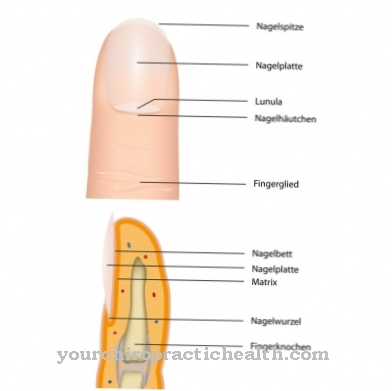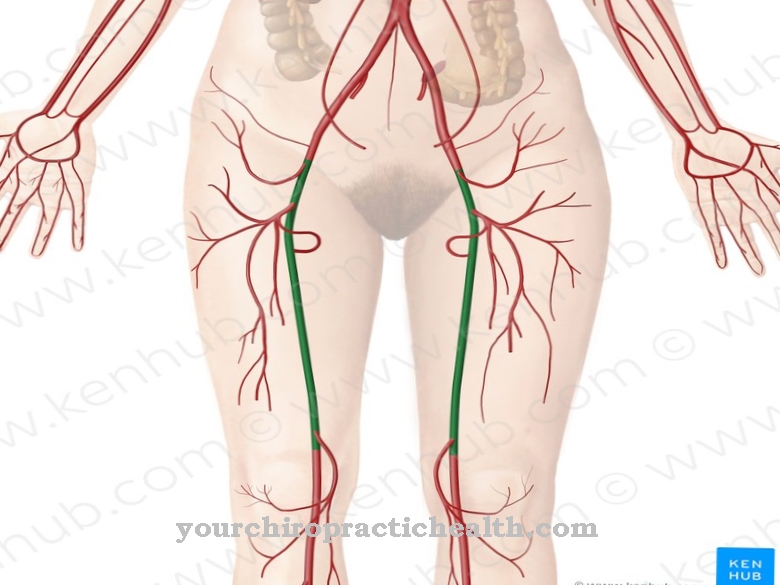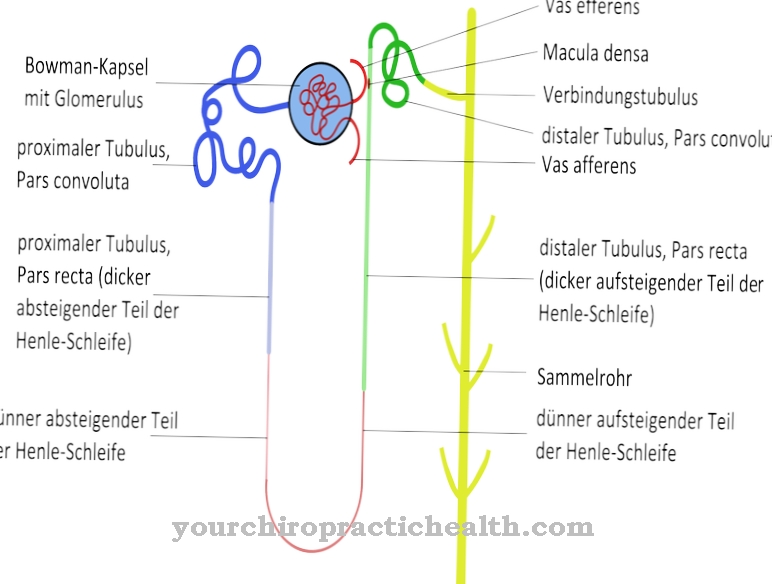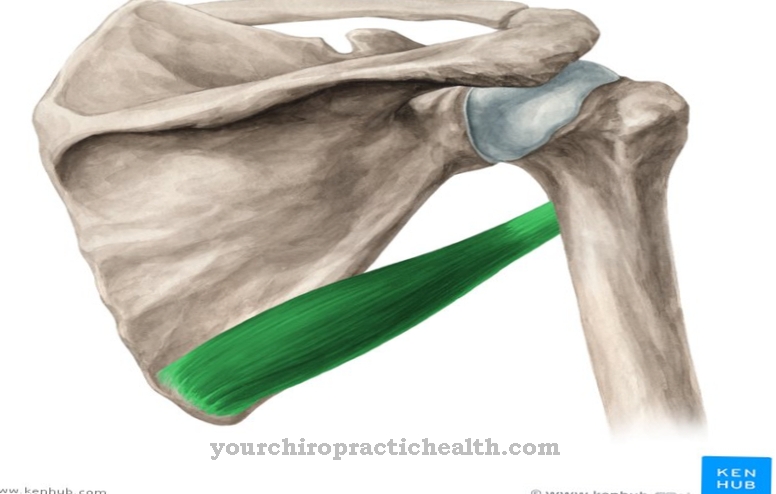Of the Postcentral gyrus is an area of the cerebrum. It lies in the parietal lobe and plays a role in somatosensory processing. Damage in the postcentral gyrus leads to astereognosia, which is reflected in the form of disorders of touch sensitivity, pain and temperature perception, as well as vibration sensation and proprioception.
What is the postcentral gyrus?
The postcentral gyrus is part of the cerebrum that belongs to the parietal lobe. The parietal lobe lies centrally in the brain behind the frontal lobe; medicine also calls the parietal lobe the parietal lobe because of its location.
Like the other gyri of the brain, the postcentral gyrus is a turn of the brain, which is defined as an elongated bulge. The counterpart to the gyri are the sulci. A sulcus is a furrow in the structure of the brain. Sulci and gyri not only form visually delimitable units: They also perform specific functions, as the nerve and glial cells within such a unit have many connections to one another. The numerous synapses enable the cells within a gyrus to work together synergistically and effectively. The postcentral gyrus lies behind the central sulcus - the central groove of the cerebrum.
Anatomy & structure
The postcentral gyrus plays an important role in sensory perception: it is where the somatosensory cortex is located. This is the processing center for haptic stimuli such as touch. The somatosensory cortex extends not only over the postcentral gyrus, but also over adjacent brain structures.
Most of the somatosensory cortex, which includes Brodmann areas 1, 2, 3a, and 3b, is located in the postcentral gyrus. Medicine distinguishes these areas from one another due to their different structure. The psychiatrist Korbinian Brodmann introduced this classification in 1909. Areas 1, 2 and 3 represent the primary-sensitive areas of the haptic information processing center. The secondary-sensitive areas, which complement the primary-sensitive areas, are in Brodmann areas 40 and 43. Medicine describes the secondary-sensitive areas because of their function as association areas.
Function & tasks
The postcentral gyrus can be subdivided into further units that differ based on their function. Individual clusters of nerve cells each represent a region of the body and image it in the brain. Within this representation, the brain primarily processes the haptic information from the corresponding area of the body.
Such an image or representation of body regions in the brain is called somatotopia in medicine. However, the somatotopia does not have the same proportions as the life-size areas of the body. A part of the body reacts somatosensory more sensitively, the more neurons map it in the brain. The representation in the postcentral gyrus accordingly occupies a larger or smaller area.
The central nerve cells of the postcentral gyrus up to the mantle edge are responsible for the lower extremities. The processing areas for the torso and upper extremities are adjacent to this. The representation of the hands takes up a lot of space, as humans react very sensitively to tactile stimuli. Laterally the illustration of the tongue and head follows. Medicine also summarizes this area as the parietal operculum. The operculum is the motor language center. The somatosensory cortex is constantly active in the background.
When a person reaches for a water glass, the body has to calculate exactly how strong the pressure of the hand can be against the glass, how much the muscles have to contract and how the grip has to tighten when the person lifts, moves or moves the glass lifts to his mouth. One of the prerequisites for this simple process is therefore haptic perception. Neurology distinguishes between the sense of strength and resistance, perception of position and the sense of movement.
You can find your medication here
➔ Medicines against memory disorders and forgetfulnessDiseases
Damage or lesion in the postcentral gyrus can lead to deficits in certain areas of perception. This is the case, for example, when individual processing areas no longer function correctly, the communication of the neurons within the postcentral gyrus is disturbed or the exchange of information with other brain areas fails.
The result is astereognosia or tactile agnosia. Medical professionals use it to describe the inability to feel shapes and correctly recognize somatosensory stimuli. They lead to a multitude of different complaints that the perception disorder causes. The individual symptoms can, however, differ from one another in individual cases and be of different severity.
Those affected are more sensitive to touch and suffer from a disorder of pain perception (nociception). Impaired pain perception can manifest itself on all levels: both the perception of pain on the surface of the body and deep pain in the muscles and bones may be affected. Disturbances can also occur with regard to visceral pain perception. Visceral pain is sensation from the organs. Furthermore, people with damage to the postcentral gyrus may no longer be able to feel the temperature because the somatosensory cortex no longer processes the information from the warm and cold receptors correctly.
If doctors examine the deep sensitivity (proprioception), they can also determine a deterioration in this functional area - both in the sense of strength and resistance as well as in the sense of position or movement. Affected people may also suffer from a disturbance of the vibration sensation or pallesthesia.
The impairment of the postcentral gyrus can have various causes. Direct damage caused by injuries, for example after an accident, and masses caused by tumors are typical. In addition, the postcentral gyrus may be associated with parasomnia. This sleep disorder manifests itself in abnormal sleep behavior and is probably due to increased activity in the postcentral gyrus during deep sleep.
























.jpg)



